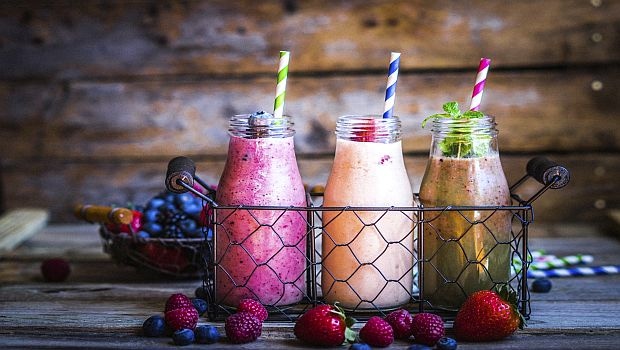The fortified beverage sector is booming. Companies and markets, London, reported the global beverage market is projected to reach sales of $1.3 trillion by 2017. Consumers want their beverage to do it all, and to do it with better-for-you ingredients. But now that traditional vitamins and minerals are a given in good-for-you drinks, consumers are looking for nutrition that goes above and beyond the status quo.
August 17, 2015

The fortified beverage sector is booming. Companiesandmarkets, London, reported the global beverage market is projected to reach sales of $1.3 trillion by 2017. Consumers want their beverage to do it all, and to do it with better-for-you ingredients. But now that traditional vitamins and minerals are a given in good-for-you drinks, consumers are looking for nutrition that goes above and beyond the status quo.
This month, Food Product Design’s digital issue, “Beverages with Benefits" examined the fortified beverage sector: Consumers’ cognizance and demand of better-for-you ingredients are putting pressure on beverage companies to produce quality products that taste good. Fortunately, advances in nutrient processing and delivery are giving beverage manufacturers more ingredient formats to work with to meet consumers’ brimming demands.
According to the 2014 Food & Healthy survey from the International Food Information Council (IFIC) Foundation, Washington, D.C., more than 90% of Americans think about the healthfulness of the food and beverages they consume, and when it comes to beverages, consumers are replacing the customary options with ones they believe to be more nutritious and better-for-you. Survey respondents said they are paying attention to other ingredients such as caffeine, preservatives, added sugars, aspartame and high fructose corn syrup (HFCS).
But it’s not enough to simply swap out one sweetener for another or to fortify a beverage with ascorbic acid and slap a vitamin C claim on the label; consumers are getting specific, condition specific, that is, with what they want out of their beverages.
As Linda Wilson, director, business development, Glanbia Nutritionals Ingredient Technologies, Fitchburg, Wisconsin, explained, “By catering to specific health states or conditions, functional beverages can be highly targeted to particular sectors of the population, focusing on areas such as gluten-free, muscle recovery or bone health."
In addition to focusing on specific conditions, functional beverages are expanding beyond the traditional smoothie and shake applications and now even water is getting a nutrient boost. “You can protein-fortify water at a 2-percent inclusion level—which you can’t even taste at that level," said Cheryl Reid, account manager, sports, health and performance, Arla Foods Ingredients, Basking Ridge, New Jersey. Whey protein, in particular, “lends itself very nicely to beverages because it’s soluble and tastes fairly bland," she said. “We’ve been able to manipulate the functionality of our raw protein to achieve a functionality in the finished delivery system that works, and still tastes good."
Functional juices and teas are being more popular as well. Both already denote heathy so boosting their nutritional lineups with antioxidants, functional herbs (which pair well with teas thanks to their common earthy aromas) and botanicals.
As Rikka Cornelia, product manager at BI Nutraceuticals, pointed out, “Some beverages ‘match’ certain nutrient or health concepts better than others," she said. And while that match may be a matter of concept—consumers “get" probiotic yogurt drinks, for instance—the trickier match to make, and the one that presents the bulk of the formulation challenge, is more often a matter of chemistry.
Advances in nutrient processing and delivery have given the industry more functional formulation formats to work with; one being encapsulation. Encapsulation protects vulnerable nutrients from heat, acid and ingredient interactions, and allows for the delayed release of nutrients into a beverage matrix. One drawback is that encapsulation usually reduces solubility.
Want to read about more advances in nutrient processing? Then download the free digital issue, “Beverages with Benefits."
You May Also Like




.png?width=800&auto=webp&quality=80&disable=upscale)